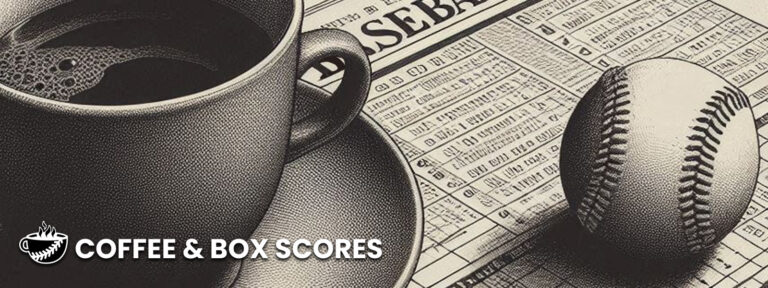September 19th, 2009 made for a doleful night to those of us whose eyes tend to get all whirligig-y at the sight of numerical outliers. In Atlanta that evening, the incomparable Pedro Martínez was but a meek version of the right-hander who had awed a decade earlier, surrendering three runs and being lifted after three frames with his Phillies down 3-0. A furious rally in the ninth put the outcome somewhat in question, but when Ben Francisco flew to right, Philadelphia was out of chances and Pedro owned up to the 100th loss of his career. The dream of the three-time Cy Young winner actually completing his ledger with double-digit defeats had vanished, a minor (and admittedly inconsequential) blemish on a golden biography.
At the end of that very same September, Martínez made what turned out to be the final regular season start of his gilded journey: a no-decision after allowing three runs in four innings, the desultory conclusion to a story that had provided countless expressions of the remarkable, the joyous, the giddy. Still, the final numbers – then and now – held the thrill that once upon a time, seemingly came whenever it was his turn to take the hill. There was that oh-so-close 219-100 record (no one since the pitching distance had been lengthened in 1893 had finished with 200-plus wins and fewer than 100 losses). And there was that almost unfathomable – considering where and when he was pitching – 2.93 ERA, making him just the 13th pitcher in the liveball era to conclude with at least 2,000 innings and a sub-three ERA. Not only had he linked to some of the more magical names the mound had hosted, he had created that web from quite a distance in time and amid a run-scoring environment that was almost tailored to make this kind of formidable run suppressor a thing of the past.
1920-2009: 2,000.0 IP and Sub-Three ERA, Organized by Pitcher’s Final Year
| Pitcher | ERA | Final Season |
| Carl Hubbell | 2.98 | 1943 |
| Sandy Koufax | 2.76 | 1966 |
| Whitey Ford | 2.75 | 1967 |
| Don Drysdale | 2.95 | 1969 |
| Dean Chance | 2.92 | 1971 |
| Hoyt Wilhelm | 2.52 | 1972 |
| Mel Stottlemyre | 2.97 | 1974 |
| Juan Marichal | 2.89 | 1975 |
| Bob Gibson | 2.91 | 1975 |
| Andy Messersmith | 2.86 | 1979 |
| Jim Palmer | 2.86 | 1984 |
| Tom Seaver | 2.86 | 1986 |
| Pedro Martínez | 2.93 | 2009 |
At the time, there was enough in the ether to believe that Martínez’s profile and placement within this historical context could be the last of its kind – a final, brilliant light integrated within a baseball landscape that captured a pitcher’s outsize influence and exceptionalness. In other words, no more sub-three ERA starters, no other flirtation with 200-plus wins and fewer than 100 defeats.
Instead, we’ve all experienced – over the past 15 years – the ascendance and apogee (and now, descent) of a voyage fending off the beliefs of such an extinction. When Martínez called it quits, Clayton Kershaw was a 21-year-old completing his sophomore turn in the bigs with a 2.79 ERA in 171.0 innings. And although he was just getting started, there was an appreciable sense that the next great pitcher had materialized, at just the perfect time. Of course, even optimistic imaginations have to be checked, and that, in part, is what’s made Kershaw’s career so glorious. For could we have really imagined, once Martínez’s numbers were inked in, that someone would subsequently challenge them?
Entering the 2025 season, the southpaw sits 118 games over .500, 212 victories set against 94 losses. Can he actually hold off the century mark in whatever time he has left, could he actually reach a pole even Pedro left unflagged? If somehow Kershaw – three-time Cy Young winner and five-time ERA champ – can do so, it’ll add yet another patch to his extraordinary expeditionary suit.
Like Martínez, Kershaw doesn’t need to cap his eventual loss tally below 100 to really alter his legacy. Even if he doesn’t throw another pitch or if all of the pitches left in his left arm are significantly less explosive and more scattershot and less capable of evaporating batters, his place in the game is so acutely and vibrantly etched.
Perhaps, it’s Kershaw’s raw ERA that most effectively and directly directs the attention and captures the origin point: an ‘X’ in the form of 2.50 that is the lowest for any hurler (min. 2,000 innings) since Walter Johnson stopped pitching after the 1927 season. Trace that line again and imagine the names that the association skips over. Aside from all the pitchers in the above table, Randy Johnson, Greg Maddux, Roger Clemens, Steve Carlton, Warren Spahn, Bob Feller, Lefty Grove, Kershaw’s contemporaries Justin Verlander and Max Scherzer – they’re all just sticking out their left or right thumbs seeking a hitch, only to be passed by. That 2.50 – so easily understandable and acceptable and ingrained within a pitcher’s phenotype – is but one signpost in an array of them pointing toward a destination reserved for the rate-stat gods.
1893-2024, Minimum 2,000.0 IP: Kershaw ranks …
~First in Winning Percentage (Ford, Martínez, Grove and Christy Mathewson round out top five);
~First in ERA+ (Martínez, Grove, Walter Johnson and Wilhem round out top five);
~Third in WHIP (after Addie Joss and Ed Walsh, ahead of Martínez and Mathewson);
~Third in Hits/9 (after Nolan Ryan and Koufax, ahead of Messersmith and Wilhelm; Martínez is seventh)
~Third in K:BB ratio (after Scherzer and Curt Schilling, ahead of Martínez and Dan Haren)
~Fourth in strikeout percentage (after Scherzer, Randy Johnson and Martínez, ahead of Ryan)
Wherever Kershaw’s final numbers and ranks settle, this current snapshot – when held to the light of the late 2000s, as the game was saying goodbye or had already offered adieus to Martínez and Randy Johnson and John Smoltz and Greg Maddux and Tom Glavine and Mike Mussina – retains a vividness. It’s made from astonishment, that the dreamiest of hopes were actually fulfilled and maybe even exceeded; it’s infused with a joyous realization that the line of greatness did not end, it was simply handed transferred; it’s treated with the electric pops that accompany trips from the now to the way back when, a journey where all sorts of familiar faces and names appear to offer guidance. If Pedro Martínez’s final efforts in 2009 were tinged with a melancholy for what had been lost, they were also an excuse and opportunity to recall the vibrancy that once felt invincible and to securely place him among the best ever. As it was with Pedro, it can now be with Kershaw.
Thanks to Baseball Reference and its extraordinary research database, Stathead, for help in assembling this piece.

Roger Schlueter
As Sr. Editorial Director for Major League Baseball Productions from 2004-2015, Roger served as a hub for hundreds of hours of films, series, documentaries and features: as researcher, fact-checker, script doctor, and developer of ideas. The years at MLB Production gave him the ideal platform to pursue what galvanized him the most – the idea that so much of what takes place on the field during the MLB regular and postseason (and is forever beautifully condensed into a box score) has connections to what has come before. Unearthing and celebrating these webs allows baseball to thrive, for the present can come alive and also reignite the past.


